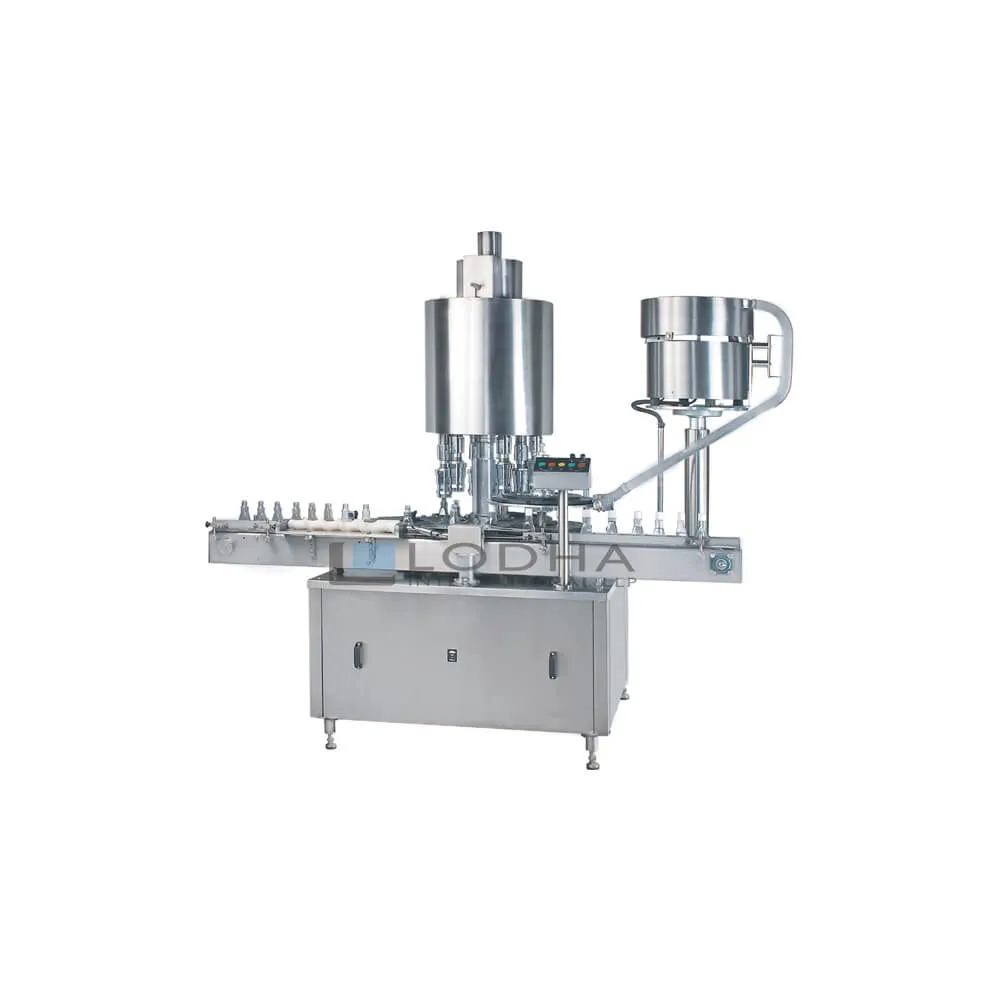Get in touch! +91 9687731331 | +91 9687631331 | info@lodhapharma.com
How to Choose the Right Bottle Capping Machine?
Servo motors are better for bottle capping machines, but if you need more flexibility, choose an automatic high-speed bottle capping machine. Chuck cappers tighten bottles manually. Inline bottle cappers are great for small to medium operations. Learn how to choose the right bottle capping machine for your business! You will be glad you did! Let's get started! Here are some tips to make the decision easier:
Servo Motors are Better for Bottle Capping Machines
A bottle capping machine is more efficient when it has servo motors. These machines utilize higher-end motion and have a smaller number of moving parts. They can be configured to handle different materials, and they can be programmed to change speed according to production needs. A manual capping machine is slow and has limited scalability and control of supply. Automation allows bottle capping machines to change production rates and scale up and down as necessary.
Servo motors enable better performance in the bottle-capping process because they can control the cam profiles better. With this, bottle-capping machines can insert pump dispensers and caps. Moreover, they can adapt capping profiles to the type of bottle and cap pairings. Servo motors also allow users to set the torques of the capping process. Servo motors are more accurate and allow bottle capping machines to handle different types of containers and bottles.

Chuck Cappers Tighten Bottle Caps
Chuck cappers tighten bottles using a mechanical clutch to keep caps tightly in place. This type of capper is very easy to use and can place and torque a wide variety of cap types. They are designed to handle virtually any type of bottle, including those with large caps. While chuck cappers can be slow, they offer high reliability.
Chuck cappers are one of the most common bottle tightening machines. These machines are attached to a chuck which descends over the bottle and tightens the cap into place. Many manufacturers produce a chuck capper with more than one head, but this machine may not be right for you. These machines require a minimum of twenty-five caps and three containers before they can begin work. While this is not ideal for every bottle tightening process, it is a viable option if your production line requires more than one size of cap.
Automatic High-Speed Bottle Capping Machine are More Versatile
Automatic High-Speed Bottle Capping machines are a great choice for high-volume manufacturers. They don't require human operators, and they ensure consistency, speed, and precision. Automatic vertical wheel pluggers are built to handle larger output volumes, so you don't have to worry about your bottles slipping through the machine. While snap and chuck cappers do the same thing, they don't allow you to rotate the container.
Automatic vertical wheel pluggers are more versatile than snap cappers, and they have an adjustable height to fit a variety of containers. This machine can be used for large containers or smaller bottles. This machine's system allows for variable timing, and the height of the wheel placer can be adjusted to accommodate different container sizes. Automatic High-Speed Bottle Capping machines are more reliable than chuck cappers, and they can work with different types of bottles.
Inline Bottle Cappers are Ideal for Small to Medium Operations
These machines can be used for multiple purposes, including bottling, capping, and desiccant inserting. The mechanical and electrical components of a bottle capper need to be compatible with your existing wiring and power sources. Electrical requirements vary by machine size, production capacity, and country of origin. European appliances typically operate on 220 volts, while American machines use 110 volts.
This machine is easy to use and maintain. The twin lever hand capper works well and doesn't give you a hard time. The magnetic cap holding mechanism is a bonus. This prevents caps from falling off and wasting your time. The unit weighs are ideal, which makes it an ideal choice for small to medium operations.
Inline bottle cappers are ideal for small to medium-sized operations. They can handle a variety of products, and have the necessary speed to produce super-high volumes of bottles. In addition, they have minimum changeovers and can perform many caps per minute, depending on the cap type and bottle configuration. There are many benefits to inline bottle capping machines. These machines are lightweight and have ergonomic features.
The Bottom Line
With the help of these different types of bottle capping machines, you can do the bottle capping and seal in a minimum amount of time. And if you want to explore other more efficient and reliable options in bottle capping and sealing, you can visit us at .

